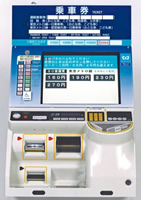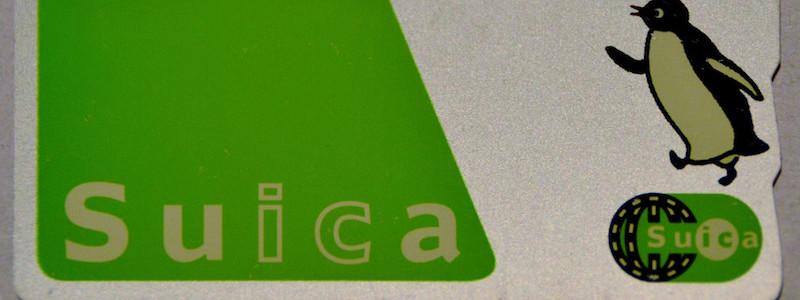Buying a Ticket
 The ticket machines usually have a “switch to English” button on the screen. If you are not sure of the fare, buy the cheapest one, and then pay the difference at the fare adjustment machine located near the turnstiles at your final destination. (This only applies to non-express trains.)
The ticket machines usually have a “switch to English” button on the screen. If you are not sure of the fare, buy the cheapest one, and then pay the difference at the fare adjustment machine located near the turnstiles at your final destination. (This only applies to non-express trains.)
(*varies among railway companies)
☆Coupon tickets are available only on Keisei Line, Keio Line, and Keikyu Line in Metropolitan area. (as of Mar. 2023)
PASMO and Suica
PASMO and Suica are prepaid fare IC cards (Integrated Chip cards). They offer a convenient way to travel around Tokyo and many outlying areas because they can be used on trains, buses and subways. You simply need to tap the card over a card reader at the ticket gates at the station or at the front of buses. You can do this in a “touch and go” fashion. No longer do you have to stand at a ticket machine and try to figure out the fare each time you have to transfer to a new train, bus or subway line. Especially, since many of the fare charts are in Japanese. It is more convenient to just add money to your (one) card at the beginning of your trip and off you go.
Suica is issued by JR while PASMO is issued by private railway companies. Both cards can be used on JR and private lines without any additional procedures. For details on the accepted areas/lines/stations, please refer to the railway company’s website.
Both of these cards are also accepted at shops, restaurants, some convenience stores and vending machines where the PASMO or Suica logos are shown, which can make purchases “on the go” faster and easier.
To purchase one of these cards, you will need to locate a ticket machine at a train/subway station with the PASMO or Suica logo shown. You can choose English instructions by touching the word “English” on the screen. You can charge your card from the amount of 1,000 Yen. A refundable 500 Yen deposit is required.
Starting March 23, 2013, ten IC cards across Japan became usable outside respective serviced areas, which means you can use PASMO and Suica in other parts of Japan like Kansai, Hokkaido, or Kyushu and vice versa. These cards include: PASMO, Suica, Kitaca, manaca, TOICA, PiTaPa, ICOCA, Hayakaken, nimoca, and SUGOCA. While the cards are compatible, the station where you get on and get off must be within the same area, and you cannot cross areas on a single trip.
Commuter’s Pass
If you have to go to work or school for more than 15 days a month it is probably cheaper to buy a teikiken (定期券, commuter’s pass, often abbreviated to teiki). Available in 1 month, 3 month or 6 month versions, these passes allow for unlimited travel between two designated stations on the specified lines. Those for students (tsūgaku teiki, 通学定期) require a certificate from the school and/or a school ID. To purchase a pass, go to the ticket office at a major station, or use the ticket machine.
